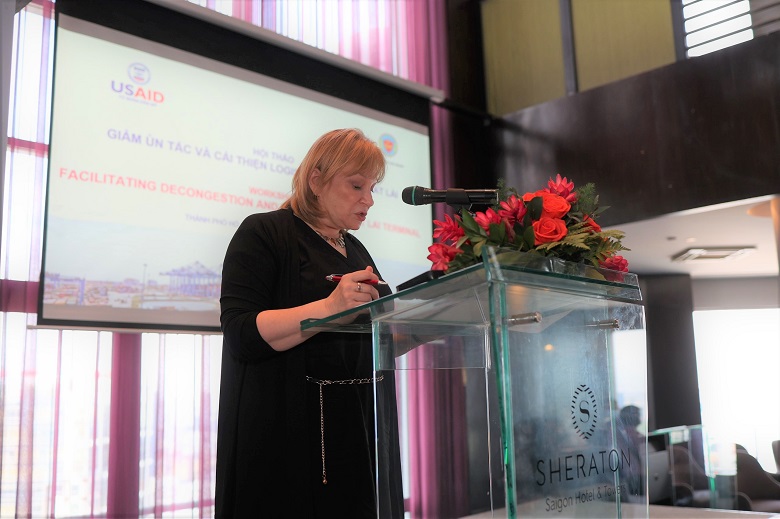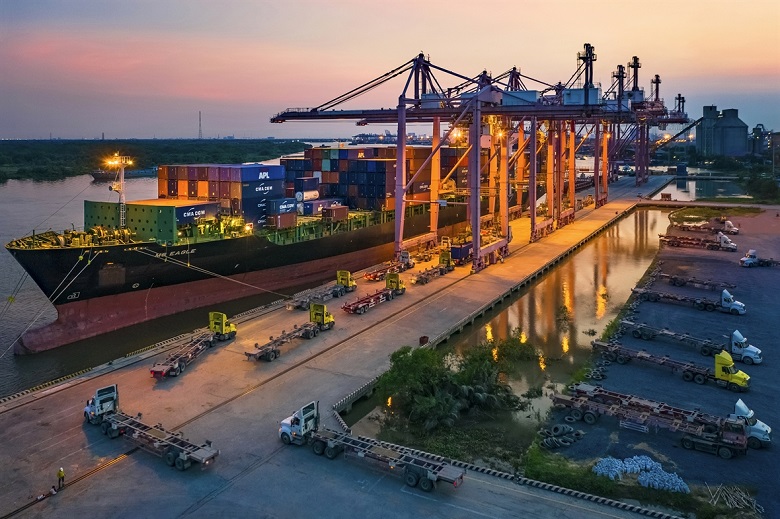USAID helps ease congestion at Vietnam busiest container port
Cat Lai Terminal handles roughly 50% of Vietnam’s total container volume annually.
The United States Agency for International Development (USAID) has released an action plan for reducing congestion at Cat Lai Terminal, the busiest in Vietnam, located at Saigon Port.
| Local experts at the launch of the action plan held in Ho Chi Minh City on May 19. Photo: USAID |
The action plan, which contains 21 recommendations, aims to restore the port's capacity to the level prior to the Covid-19 pandemic and meet the growing demand that is estimated to double by 2030 in terms of container throughput at the port.
Launched in partnership with the General Department of Vietnam Customs (GDVC), the action plan is the result of a Pre-Feasibility Study on Anti-Congestion and Facilitating Trade Logistics at Cat Lai Port conducted by the USAID Trade Facilitation Program worth US$21.7 million in the 2018-2023 period.
The recommendations cover a wide range of issues from leveraging IT solutions, enhancing information flows, cargo clearance, and expanding port facilities, to improving operational performance. In addition, through USAID’s INVEST project, the agency is working with the Ministry of Transport’s Vietnam Maritime Authority to examine likely areas for public-private partnership, which is an effective way to mobilize investment for large-scale infrastructure projects.
“As international trade recovers from the impacts of Covid-19, addressing congestion at Cat Lai Port has become a priority,” Mai Xuan Thanh, GDVC Deputy Director-General, said, adding that when implemented, the anti-congestion measures will facilitate international trade, contributing to enhancing Vietnam’s competitiveness in the region and the world.
“Easing congestion at Vietnam’s ports will become increasingly important as trade rebounds in the post-Covid-19 environment,” said Ann Marie Yatishock, USAID/Vietnam Mission Director.
She said the pre-feasibility study conducted by USAID recommends an action plan for Vietnam’s busiest container port to help it handle a projected surge in container volume.
| Ann Marie Yatishock, USAID/Vietnam Mission Director. |
Vietnam’s container capacity
Vietnam has 44 seaports with a total capacity of about 500 million tons per year. The major ports are located in Ho Chi Minh City, Haiphong, Danang, and Qui Nhon.
Approximately 4.9 million 20-foot containers (TEUs) are handled in Saigon Port each year, which equates to about three million trucks, or more than 8,000 trucks per day transiting in and around the city to discharge or load containers from the port area.
Cat Lai Port handles over 92% of this volume and roughly 50% of the country’s total container throughput.
The USAID-supported program results from the fact that inefficient border procedures, including customs clearance at ports, are preventing Vietnam from improving its trade competitiveness. For that reason, the five-year program is supporting the Government of Vietnam to adopt a risk-management approach to customs and specialized inspection, strengthening the implementation of the World Trade Organization’s Trade Facilitation Agreement of which both Vietnam and the United States are members. This will assist Vietnam in achieving its development objectives while reducing the time and cost to trade.
It focuses on standardizing customs procedures, strengthening national and provincial coordination, and building the capacity of customs officials, supporting Vietnam in developing a more attractive trade and investment climate for enterprises, traders, and investors.
The program is expected to reduce up to 70% of customs clearance time at Cat Lai Terminal. The results would also facilitate transactions between Vietnam and the US in long-term trading.
| Cat Lai Port, Ho Chi Minh City. Photo: Giang Son Dong |














